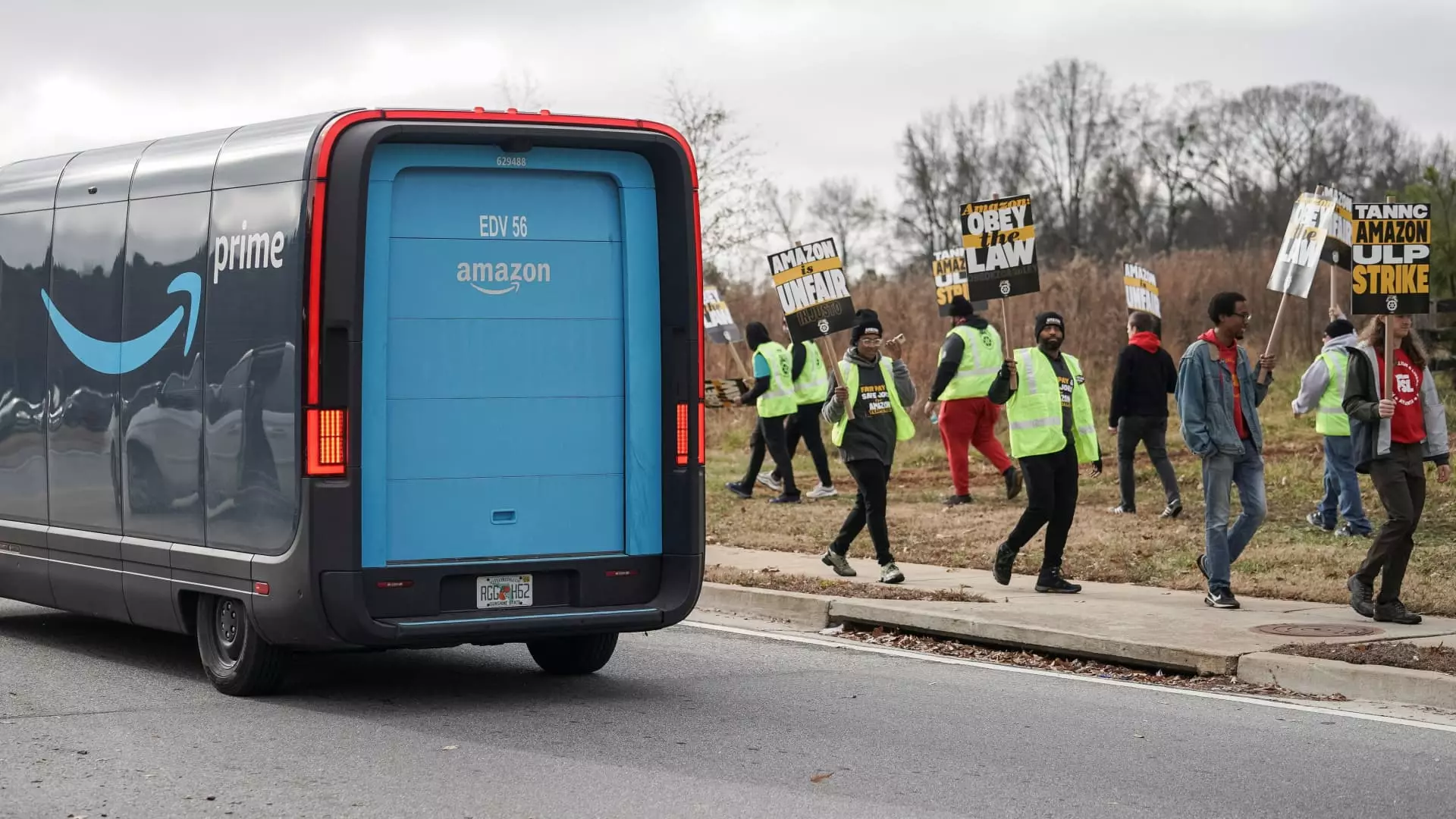In a decisive move that highlights the ongoing tension between labor and management, workers at seven Amazon facilities across New York, Georgia, California, and Illinois initiated a strike demanding improved wages, enhanced benefits, and safer working environments. This latest strike, led by the Teamsters union, is not merely a series of isolated actions; it represents a growing wave of labor activism focused on advocating for fundamental workers’ rights, particularly as we approach the bustling holiday shopping season.
The strike serves as a strategic effort to compel Amazon to engage in meaningful negotiations regarding labor contracts. The Teamsters union, which had previously outlined a deadline for Amazon to commit to bargaining, has expressed frustration over the company’s lack of responsiveness. According to Teamsters President Sean O’Brien, the delays in Amazon’s negotiations reveal the corporation’s “insatiable greed,” particularly as consumers prepare for the high demand of holiday shopping. The message is clear: if packages are delayed, responsibility lies squarely with Amazon’s prioritization of profit over employee welfare.
In the wake of the strike, Amazon has pushed back against the Teamsters’ claims, asserting that the union’s leadership has been misleading the public about the scale and support of the strike. According to an Amazon spokesperson, the strike primarily includes individuals who are not Amazon employees, framing the protest as an infiltration of outsiders rather than a grassroots movement among its own workforce. This assertion raises critical questions about the extent of actual employee dissatisfaction within Amazon and the union’s capacity to mobilize meaningful support among employees dissatisfied with working conditions.
The Significance of Union Representation
The narrative around unionization at Amazon has shifted notably since the successful unionization of Staten Island warehouse workers in 2022. This landmark victory marked a significant change in labor relations and mobilization within one of the world’s largest companies. The Teamsters union claims to represent nearly 10,000 Amazon workers; however, this figure accounts for less than 1% of the company’s massive workforce of 1.53 million. The statistics highlight a challenge for unions attempting to organize within the tech and retail gigantism that often resists collective bargaining.
The current strike is being dubbed the largest of its kind against Amazon in American history. As such, it represents not only a pivotal moment for the workers involved but also a critical turning point in the broader landscape of labor relations in America. With Amazon’s historical opposition to unionization efforts, the unfolding developments will be carefully observed by both labor advocates and corporate watchers alike. The success of the Teamsters in negotiating a contract that adequately meets workers’ demands could significantly influence labor dynamics across multiple sectors, potentially ushering in a new era of worker rights and corporate accountability.
The confrontation over labor rights and working conditions at Amazon encapsulates the larger discussions of equity, justice, and ethical corporate practices that resonate deeply with a public increasingly aware of inequalities in the workplace. As this strike continues to unfold, it remains to be seen whether it will lead to tangible changes in Amazon’s treatment of its workforce or if the company will maintain its status quo amidst increasing external pressure.

